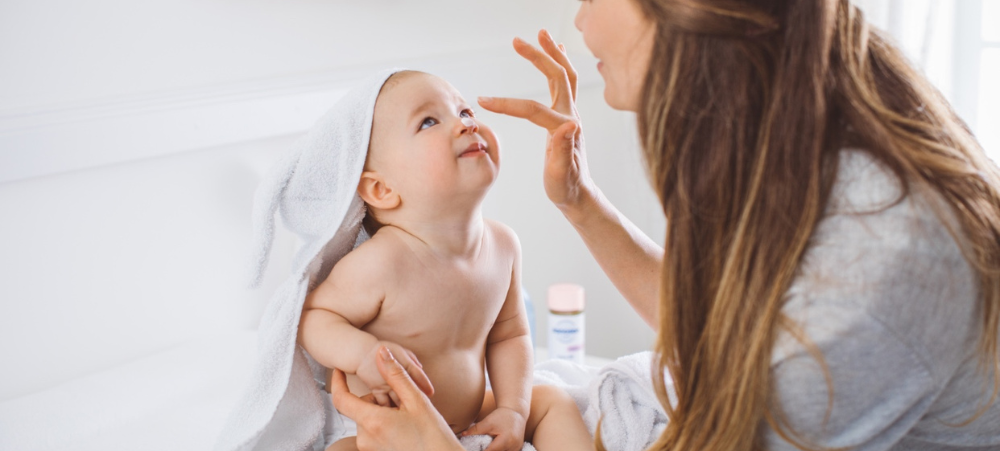Starting solids can be an exciting time. I remember when we started our son on solids. We had my brother and the grandparents over. He was propped up in a chair and we all watched as my husband and I fed him some mashed butternut from a spoon. The video is so cute, the words of praise about how clever he was is quite impressive, and his outfit was cuter than cute. However, now when I watch the video, I shudder. I shudder because I can now see all the non-verbal signals that he was sending, saying he was not ready. We could have waited a week longer, just to give him time. If I had known better, I would have done better.
I followed the WHO guideline for the introduction of solids; however, my son was born prematurely. Although he was six months old, he was not six months corrected age and was not physically ready to start solids. I wanted to be a good mother and provide extra energy for him so that he would continue to grow well and so I started to introduce solids early instead of waiting. If I were to do it again, I would follow the tips below and watch his non-verbal signs to assess if he is physically ready for solids.
What to look for when assessing if your child is ready to start solids The WHO recommends six months as the right time to introduce your baby to solids, and they have good reason to. Before a child is ready to eat solids, they need to be able to protect their airway while eating. This is important to prevent choking and aspiration (when food or liquid goes into the lungs). So, how can a parent tell if a baby can protect their airway?
• Look for head and neck strength: Can your baby hold their head in a book-reading position for extended periods of time. Picture yourself sitting upright and reading a book. Think of where your chin is in relation to your neck. Can your baby hold
the same position?
• Can you baby sit unaided? This means alone and not in a chair that supports them, or with pillows that help to prop them up. The same muscles that are used for sitting up also help to stabilise a child for eating.
• Is your baby showing interest in food? Does your baby watch you eating or try to take food from your plate? What does your baby do with the food once they have it in their hands? Do they just play with it (that is ok, and in fact, it is great for sensory reasons) or does your baby mouth the food?
• Once you start feeding your baby, does your baby stick out his tongue? This is an automatic movement where the tongue pushes the food out the mouth. If this happens, then your baby has not lost his tongue thrusting reflex. It is a good indication that you should wait a bit before starting solids.
• What feeding cues are you seeing? Is your baby turning to the food and opening his mouth or turning away? Does your baby put their arm in the way of the food or start crying? If so, your baby is showing you that he is not ready and not enjoying this activity.
I am not a fan of the saying that ‘food under one is just for fun’. The introduction of solids is very important as it has a large impact on how your baby grows and their relationship with food into adulthood. At about six months your baby needs extra dietary iron to keep up with their growth. This additional iron is supplied from the solids that you start to feed your baby. It is important to include food that has a high
iron content. Children also need to learn about different textures,bflavours, colours, temperatures and shapes of food. The ideal time to expose your baby to this is before they are one year old. As children get older, they start to become choosier about the food they eat.
This is called neophobia and is normal. It is thought to be a protective instinct, so that a child does not eat something that could potentially be harmful to them while they are out and about exploring the world. By exposing a child to as many different foods, textures, colours, shapes and combinations, you are broadening the child’s term of reference for which foods are safe. If a child has just had soft food until they are one year old, they are more likely to become a fussy eater as they have not learnt how to chew and move lumpy food around in their mouth.
Tips about solids and children
If you don’t eat the food, don’t expect your child to love it either. Your child watches your eating habits and copies you. Eat with your child, let them see what you eat and how to eat it. They will earn their table manners from you. Dinner time can be a special family time where
you are able to connect and find out how each other’s day went. When introducing a new food (unless it is sweets) children may take at least 15 positive exposures before they accept the food. (Yes, I often have to breath and be patient with my children). A positive exposure can be seeing the food, touching the food or smelling the food. They don’t necessarily have to put the food in their mouth. If you force a child to eat a food, the child experiences it as a negative exposure.
Try not to tell your child that the food is ‘SOOO NICE and TASTY’, because for them it may be awful, and they will not trust your judgement on food taste. Rather explain the food to the child, what colour is it, how does it feel in your mouth, what shape it is, and if it makes a sound when you chew it. That way the child is focused on the food and learning about it. If I am introducing a food to my daughter that has a strong taste, like capers, for example, I explain to her that they have a strong taste and I am not sure she will like it. She generally will taste the food and eat it, or tell me it is too strong for her, but she is happy to try it again later. Try not to use food as a reward; rather use a sticker chart or special time together. If food is linked to a reward it makes it so much easier to eat for comfort when your child is older. One of the most important things to remember is that feeding is messy. Yes, the best time to feed is just before a bath. Let your child explore and learn about the food they are eating. It is ok if they cover their face with butternut – the photos are so cute. Once they have eaten, you can wipe up and clean the feeding chair. This way your child is learning not only how the food tastes, but also to use their other senses when eating food.
- Tips for Breastfeeding Success! - October 17, 2023
- Helping your child deal with common childhood fears - September 21, 2023
- Keeping Fit while you’re Pregnant - August 29, 2023





